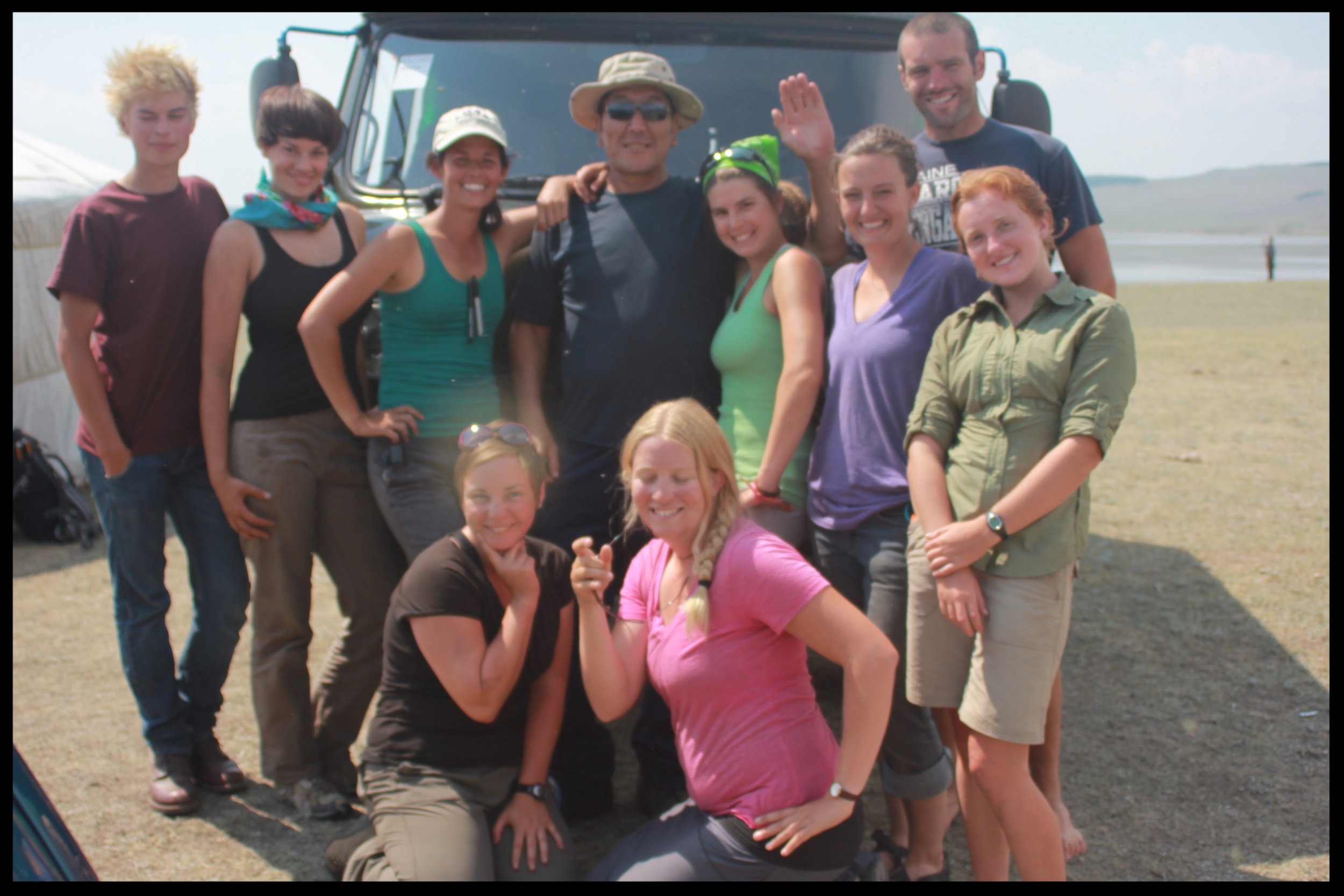Session III: Soyo Archaeology
Project participant using geophysics to detect sub-surface magnetic anomalies
Dates: July 5 - July 25, 2020
Fees: $3,100 USD
Skills: archaeological survey; excavation; geophysics, drones and GIS; basic artifact cataloging, analysis and conservation; ethnographic interviewing; paleobotanical flotation
Logistics: Participants will camp in their own tents at a single base camp for the duration of the project. Three project gers provide communal space, a kitchen and a laboratory for more comfortable living and working conditions. The nearby Khog River will provide water for drinking (after purification) and cleaning.
Overview: The Soyo Archaeoogy portion of NOMAD Science is composed of an interdisciplinary, international team from Flinders University, the National Museum of Mongolia, and more that investigates the transition from hunting and gathering to the herding of domesticated animals in northern Mongolia. The results of this effort will provide not only important cultural heritage ties for modern Mongolians, but also an important case study to be used in understanding the ways that humans and culture evolved globally and temporally. The primary themes explored include adaptation to climate change, economic shifts, socio-political complexity, inter-regional networks and trade, and human-environment-animal interaction - of course many of which remain relevant and important to our world today. The methods used to investigate these themes range from traditional archaeological methods like survey and excavation, but also include more interdisciplinary and cutting edge techniques such as remote sensing (ground penetrating radar, magnetometry, aerial photography), ZooMS (animal identification through mass spectrometry), ethnoarchaeology, paleoethnobotany, pXRF, and more.
Primary Research Questions: How did the transition from hunting and gathering to herding (a long process that took place approximately 3,000-6,000 years ago) impact the social, political, and cultural context of the region (and vice versa)? How does this compare to other regions where similar transitions took place?
Threats: With increasing tourism in the area, one local entrepreneur has begun to develop a tourist camp directly over the top of the site. This project is helping to educate local officials and create local allies in protecting the site from further destruction as well as to work with the entrepreneur to find alternative development options and locations that won’t harm the archaeological resources. Furthermore, the permafrost of the region is rapidly melting. Just 15 years ago when the site was discovered, permafrost occurred approximately 30-50 cm below the surface. As of 2018, the permafrost is 1.5-2 m below the surface. Organic material that may have survived in the site’s potentially 15,000 year history will now rapidly decay. Not much can be done locally except to continue to do careful archaeology to recover what artifacts might remain.
Description: The primary goal of NOMAD Science at Soyo is to connect the most robust, cutting edge scientific research by professional archaeologists with students needing field experience and training, casual non-professional volunteers and tourists, Mongolians interested in their own cultural heritage and local inhabitants of the area where we work. In a context where federal funding is declining or at risk, it is critical for archaeological projects to work to create allies outside of the discipline who recognize the importance of cultural heritage preservation and sound scientific investigation. Additionally, within the discipline, the project seeks to advance the anthropological theories and frameworks that are used to model cultural change and evolution. NOMAD Science (formerly NMAP) has been operating in the Darkhad since 2011, and is a continuation of a Smithsonian Institution project that dates back to 2001. Previous research has begun to illuminate the regional settlement patterns and ritual practices of the inhabitants of the region. These surveys also located the important site of Soyo that is located between the hunters and reindeer herders of the Taiga, and the sheep and cattle herders of the Darkhad Basin. Preliminary research at the Soyo site, the current focus of Session II, has revealed a unique depositional history where wind-blown sand has stratified thick artifact deposits creating a one of a kind, 10,000+ year continuous record of human activity with particularly robust assemblages during the Neolithic and Early Bronze Age (3,000-6,000 BP) - a key time in the introduction of domesticated animals into the region. No other similar domestic sites that have such a long, well preserved occupational sequence are known from Mongolia.
While Mongolia independently developed complex, large world empires, it lacks many of the elements understood to be critical to the development of such institutions like high population density, sedentism, rich biodiverse environments, and a reliance upon agricultural products. Sound scientific practice dictates that in order to understand such a complex system, the variables should be understood as independently as possible. Mongolia provides one of the few contexts in which agriculture can be nearly entirely removed from the equation, thus illuminating a more general understanding of the true requirements for dramatic shifts in socio-political complexity.
Methodologies: NOMAD Science will utilize a suite of cutting-edge methodologies in order to investigate the research questions listed above. A truly interdisciplinary project, NOMAD Science utilizes traditional archaeological methods such as survey and excavation, combined with interdisciplinary and high-tech methodologies. Paleoethnobotanists (flotation) and paleoclimatologists (test pitting) are working to reconstruct environmental change through the occupation of the site. Geologists and geophysicists are working to interpret the site stratigraphy and remotely sense anomalies (Ground Penetrating Radar and Magnetometry), directing archaeological resources (funding, time, and labor) to areas of the site that have great potential for preservation and answering the research questions. Ethnoarchaeologists and surveyors are working to create predictive models based on modern land use practices, and archaeological site locations that help researchers to locate sites in the landscape. Zooarchaeologists are working to analyze faunal assemblages (traditional and ZooMS/mass spectrometry) - the key to quantifying the wild-domestic shifts in animal bones found at the site in different periods. All materials will be undergo preliminary processing in the field laboratory, but then will be curated at the National Museum of Mongolia where there will undergo further processing and analysis.




